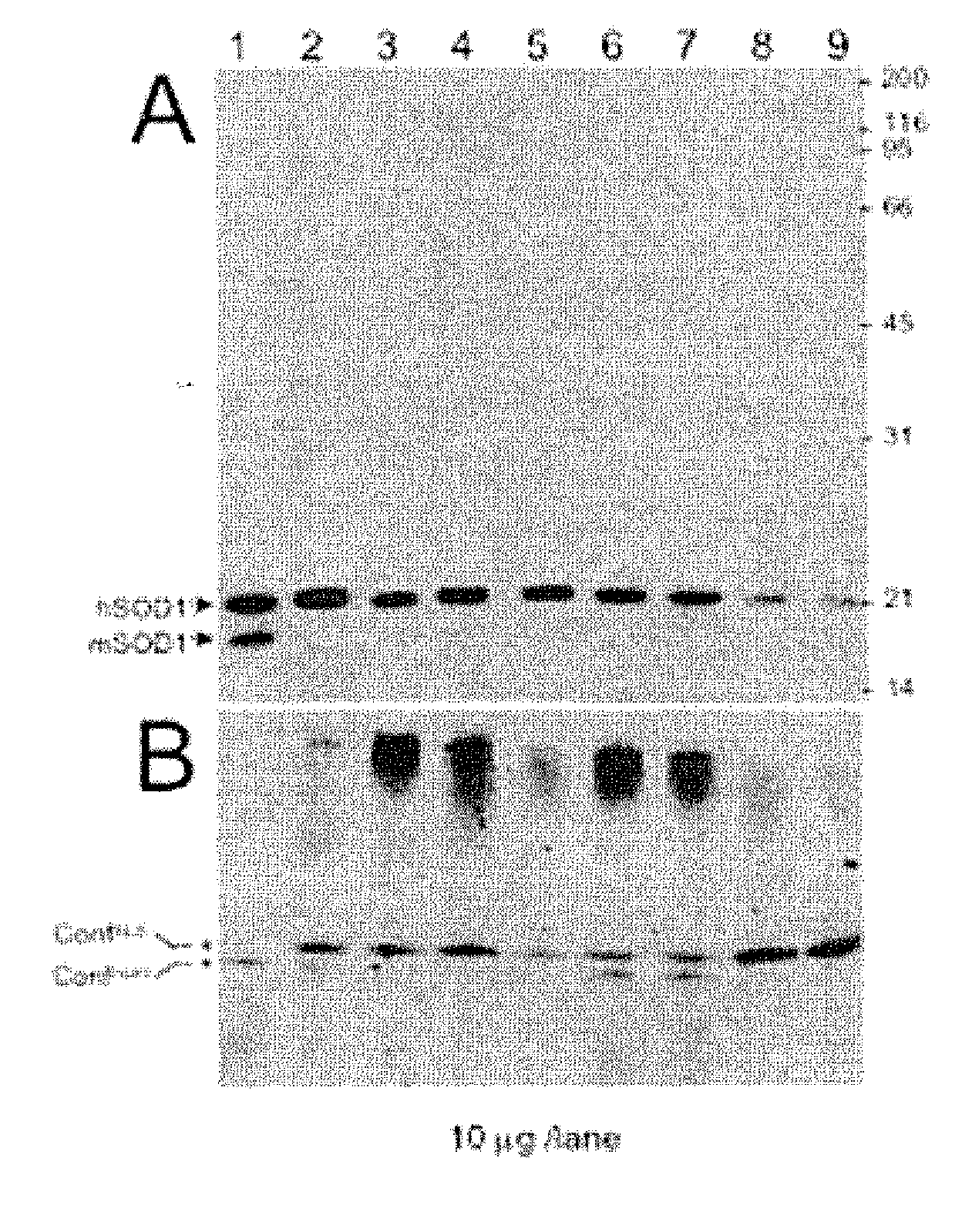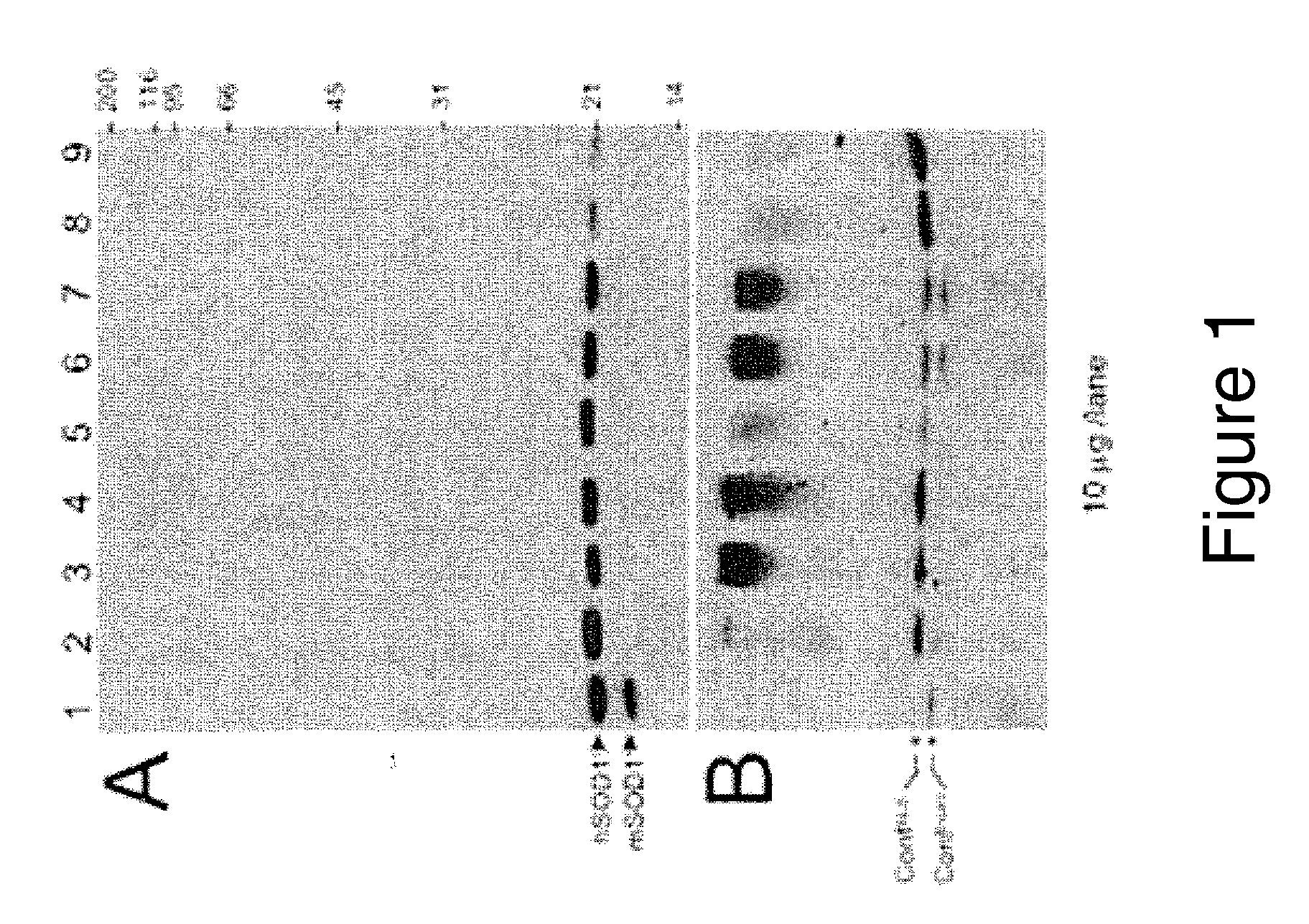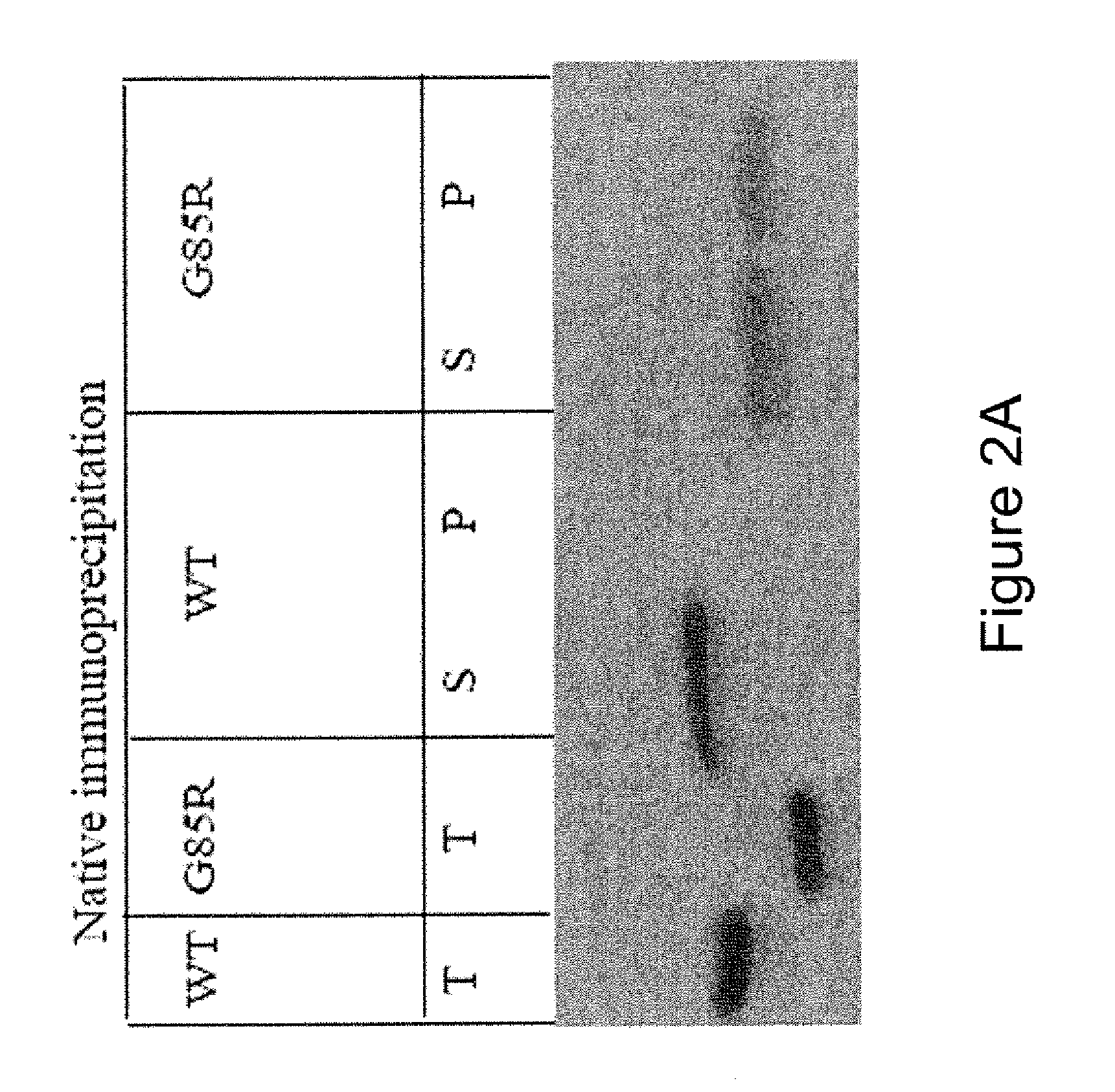Biomarkers for als
a technology of biomarkers and als, applied in the field of human amyotrophic lateral sclerosis, can solve problems such as complete paralysis and death, loss of motor control in hands and arms, and difficulty in speaking, swallowing or breathing
- Summary
- Abstract
- Description
- Claims
- Application Information
AI Technical Summary
Benefits of technology
Problems solved by technology
Method used
Image
Examples
example 1
5.1 Example 1
Diagnostic Assay for Sporadic and Familial ALS
[0059] Cytosol was obtained from human spinal cord essentially as described by Liu (2004).
[0060] SOD-1 in the cytosol was screened by native crosslinked polyacrylamide gel and denatured crosslinked polyacrylamide gel (SDS) electrophoresis and immunoblotted using a rabbit antiserum prepared against SOD-1 peptide and which reacts with both mouse and human wild-type SOD-1 under denaturing conditions but only human SOD-1 under native conditions. The rabbit was immunized with the peptide: NH2-CYDDLGKGGNEESTK-COOH (SEQ ID NO:1) conjugated to keyhole limpet hemocyanin (KLH) as previously described by Pardo et al., Proc Natl Acad Sci USA. 14;92(4):954-8 (1995).
[0061] As shown in FIG. 1, the normal cell extract contained a pair of SOD-1 conformers observed by immunoblotting of the native gel (panel B). Immunoblotting was performed as described previously (see, e.g., Liu J, et al., Neuron 8;43(1):5-17 (2004)). However, in sporadic ...
example 2
5.2 Example 2
Method for Identifying ALS Therapeutic Agents
5.2.1 Cell-Free Translation of SOD-1
[0063] To prepare SOD-1 mRNA, human SOD-1 cDNA, obtained from D. Borcheldt (see Ratovitski et al., Hum Mol. Genet. 8: 1451-1460 ((1999)), was subcloned in genetic linkage with the SP6 promoter in Bluescript vector (Stratagene). The expression plasmid was linearized downstream of the termination codon by digesting with BamH1. Cell-free transcription reactions were prepared containing 0.2 mg / ml plasmid DNA, 40 mM Tris pH 7.9, 6 mM MgCl2, 2 mM Spermidine, 0.5 mM of each NTP, and 1 unit each of SP6 polymerase and Rnase inhibitor per 2.5 μL of transcription reaction. Transcription was performed at 40° C. for 1 hr, and transferred to ice upon completion.
[0064] Transcription-linked translation reactions were prepared by adding SOD-1 transcription reaction product at 20% of the final translation volume. Also added was ATP and GTP at 1 mM each, creatine phosphate at 10 mM and amino acids at 40 μ...
example 3
5.3 Example 3
Different SOD-1 Conformers Correspond to Sporadic and Familial ALS
5.3.1 Conformer-Specific Modification of Proteins
[0071] We decided to detect protein structural differences that result in differences in modifications by chemical reagents (Soares and Giglio, 2003; Goldberg et al., 2003). Specifically, chose to utilize a cross-linking reagent that conjugates biotin to many proteins. The reagent used for the proposed study is sulfo-N-hydroxysuccinimide-Long Chain-biotin (sulfo-NHS-LCbiotin, below).
[0072] This compound reacts with primary amino groups (—NH2) in pH7-9 buffers to form amide-bound detectably labeled proteins:
[0073] Without being bound to any specific theory of action, the extent to which a protein can be modified using this method depend upon the available primary amine moieties in the protein conformation. Thus, differences in the protein's three-dimensional structure (e.g., the protein's fold) may alter the availability of available primary amino gro...
PUM
| Property | Measurement | Unit |
|---|---|---|
| Reactivity | aaaaa | aaaaa |
| Affinity | aaaaa | aaaaa |
Abstract
Description
Claims
Application Information
 Login to View More
Login to View More - R&D
- Intellectual Property
- Life Sciences
- Materials
- Tech Scout
- Unparalleled Data Quality
- Higher Quality Content
- 60% Fewer Hallucinations
Browse by: Latest US Patents, China's latest patents, Technical Efficacy Thesaurus, Application Domain, Technology Topic, Popular Technical Reports.
© 2025 PatSnap. All rights reserved.Legal|Privacy policy|Modern Slavery Act Transparency Statement|Sitemap|About US| Contact US: help@patsnap.com



